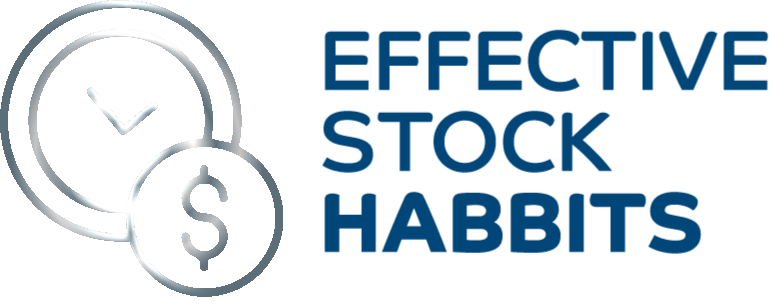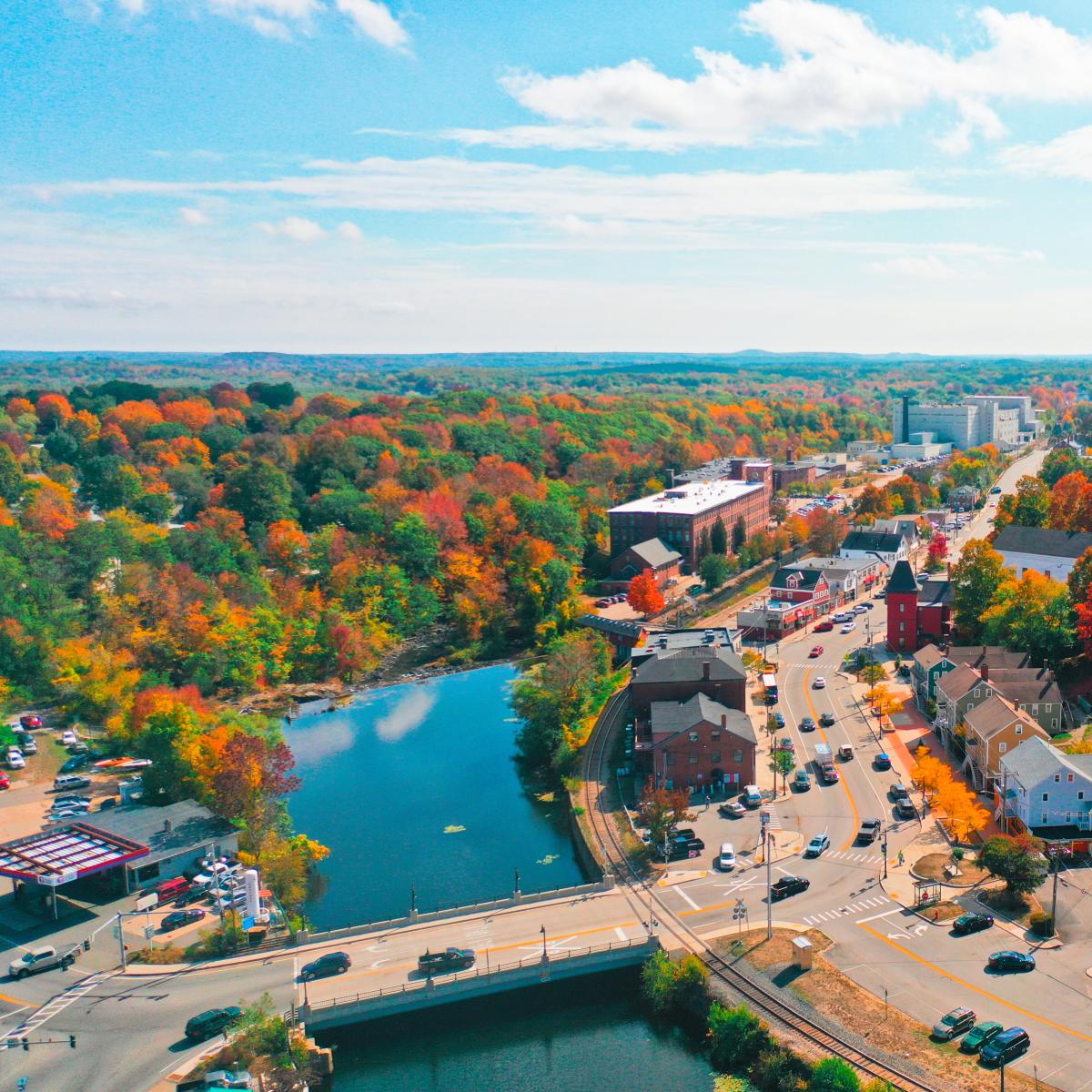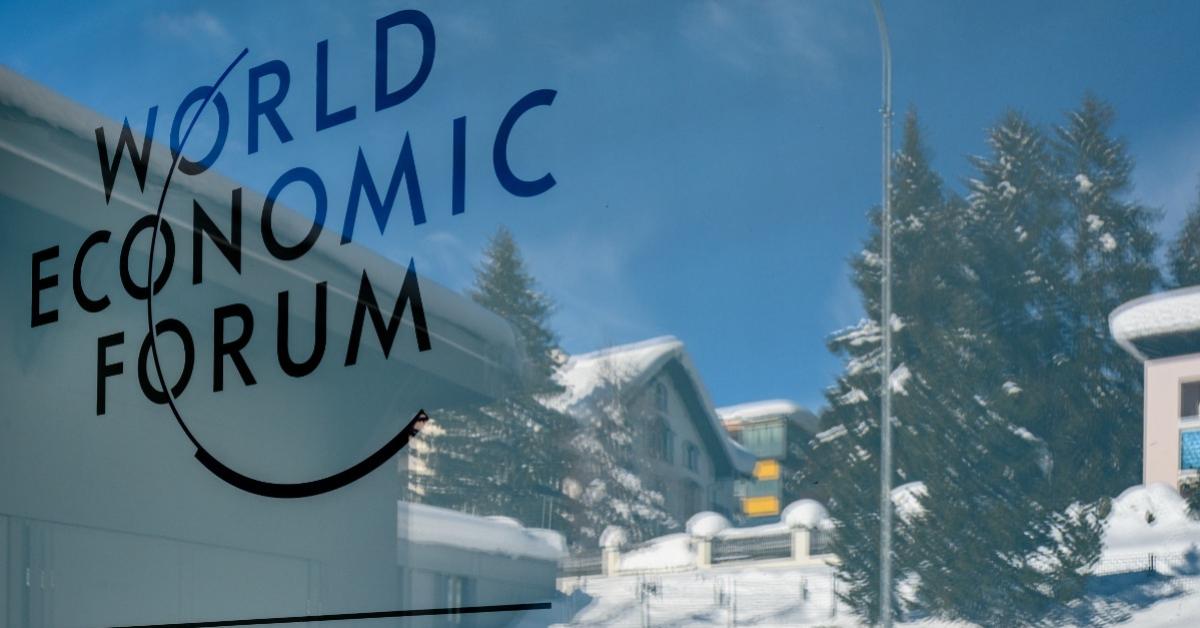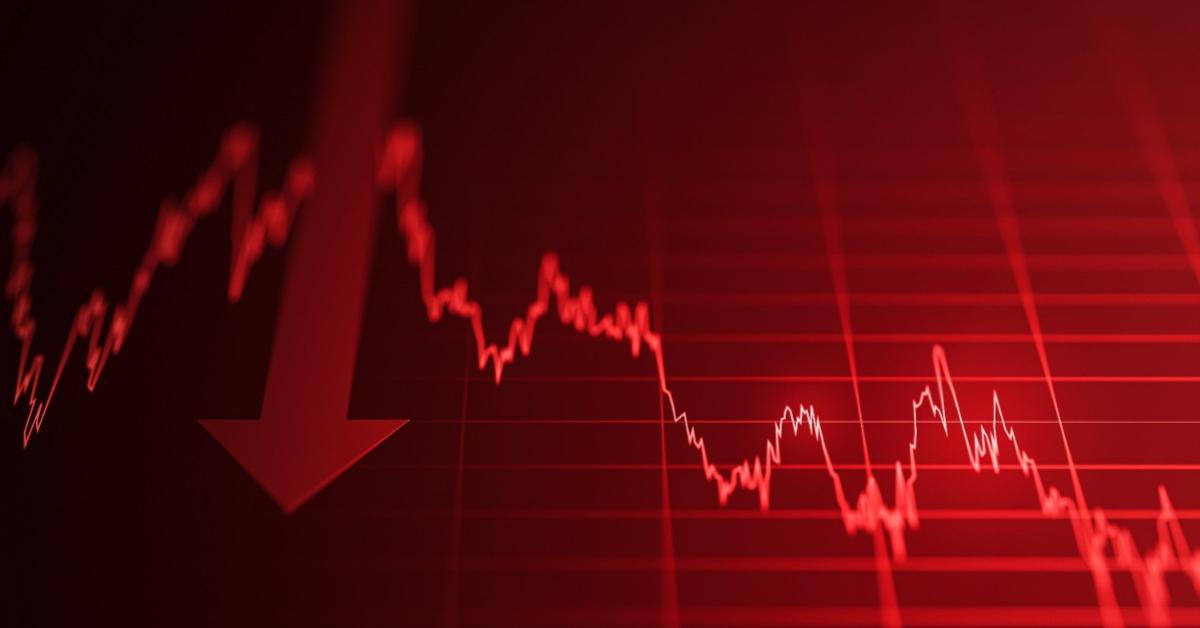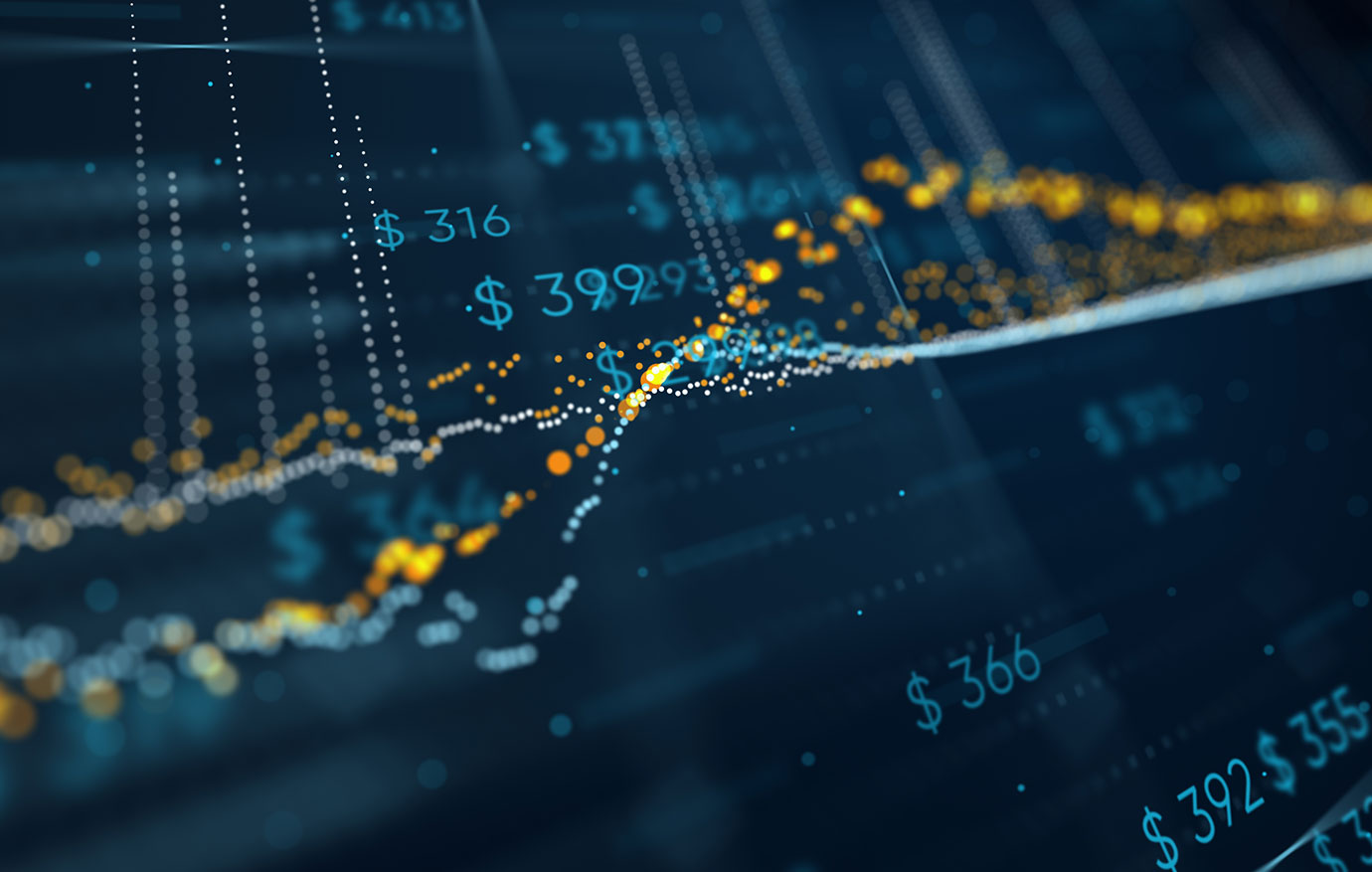Post Content
2023
The Federal Reserve has yet to get price increases anywhere near its own arbitrary 2-percent goal, but a mild slowing in growth rates has Biden claiming that price inflation is “falling.”
Original Article: “Real Wages Fall for the Twenty-First Month as Rent and Food Prices Keep Rising”
This Audio Mises Wire is generously sponsored by Christopher Condon.
One of the most helpful insights of Austrian economics for business is the understanding of uncertainty. To complete a sale to a customer is to take that customer on a journey from high uncertainty to lower uncertainty — sufficiently low that they’ll make a purchase and enter into the experience of ownership or receiving service. We illustrate this principle via the market for small business insurance — a service that our guest Ryan Hanley describes as confusing, time-consuming and costly, i.e., fraught with uncertainty for customers. He addresses the problem by freely dispensing usable knowledge, and explained to Economics For Business how that revolutionizes the industry.
Knowledge Capsule
In a market where knowledge is hard to acquire, a knowledge provider creates new economic value.
The subject of small business insurance is quite opaque for customers. The language is often arcane and the terminology is hard to understand. The type size on contracts is small. It’s often unclear to customers what coverage they need, or what coverage they have, and what coverage they need. Ryan Hanley listened to customers’ questions and requests from his time as a retail sales agent and quickly understood that the provision of easy-to-consume and easy-to-understand insurance knowledge would be immensely valuable to customers. He started writing blogposts and FAQ’s for this purpose.
Expanded experience provides the foundation to be a credible and useful knowledge provider.
Ryan Hanley has held positions in the insurance field from sales agent to VP Marketing to Chief Marketing Officer to CEO. He’s also tried entrepreneurship in other industries. He’s talked to a lot of customers to understand their issues and problems and to try to solve them. This accumulated experience gives him the foundation to be a knowledge provider. He knows what knowledge is missing, what knowledge is most useful, and what form it should take for best delivery.
Knowledge becomes even more valuable to customers when it’s delivered with high empathy.
Ryan stresses that insurance is a superb service. If a customer business experiences a shock — its premises burn down, or it suffers a criminal theft — insurance is there to make things right again. It provides sustainability for a business and reassurance for the business owner and employees. Insurance is a high-empathy service.
However, the customer interface with insurance can be low-empathy — confusing and time consuming, and highly inconvenient to navigate by reading through contracts and filling out forms. Ryan’s solution is “human optimization”: making insurance easier to understand and easier to navigate and providing human contact and the human touch to add value. He points out that the insurtech innovations from Silicon Valley, which aimed to make insurance more efficient via an all-technology / no humans approach, has resulted only in unprofitable and failed startups. Customers need humans to give them trust in a complicated field they don’t understand. Digital automation is not the entire answer.
Freely available knowledge and the human touch combined with better technology elevates the service recipe to a higher level.
Ryan recognized that the native tech for the insurance industry, that had been built up over the years but become frozen and resistant to innovation, was a contributor to customer frustration. His answer was not new digital technology to replace the old, but a clearer identification of the customer problem: the multiple insurance tech systems were not well-connected with each other and not well integrated. The solution lay in better API’s and better software integration, which is what Ryan concentrated on. So now he could bring the human touch, plus new knowledge to fight confusion and opacity, and better technology exhibited as faster flow between content modules.
The business benefit lies in customer relationships and customer retention.
The business model for insurance depends on customer retention. Selling a policy is not profitable on day 1, but becomes profitable over time as cash flows from periodic premium payments. Customer retention is the key to profit and retention reflects satisfaction. Ryan is demonstrating that setting a high standard at the front end of the contract, with a more human interface, freely dispensed knowledge, and convenient navigation of the insurance process, results in profitable revenue streams and a high cash flow ROI over time.
Listening to customers, understanding their needs, and discovering the best way to serve results in retention.
Customers are looking for a special form of reducing uncertainty.
Insurance sells protection from risk. This is math to them, a calculable probability that governs what they charge for premiums and how much capital they need on hand for payouts. For customers, insurance is relief from uncertainty, a subject value that’s not math. They worry about sustainability: will they survive the shock when there is a fire or a crime. Ryan’s approach is to help them advance from high uncertainty (I’m not sure of all the risks, I am not sure what is the right coverage for my business) to lower uncertainty (I’ve been given new knowledge, so I am more informed, I know enough to make a choice of policies and providers). Ryan’s company can customize service (including, for example, matching payments schedules to the seasonality of a customer’s business) so that the customer feels certainty that the service is matched to their need.
Knowledge is education plus creativity. The result is trust.
The kind of knowledge that Ryan dispenses about insurance is education. Recipients are learners, filling in knowledge gaps. It can come in the form of YouTube videos or blogposts or any other form. Ryan’s Rogue Risk site offers hundreds of videos and articles. He is educating the customer base.
Creativity in communication is a vital part of the recipe. Education delivered with creativity stimulates curiosity and productive conversations. Even for a potentially dull subject matter like insurance, creativity add spice and extra interest. Creativity is human, and the human component can deliver trust. Giving knowledge away rather than hoarding it is a great start towards a trusting relationship.
The fifty-third annual meeting of the World Economic Forum (WEF) brought together fifty-two world leaders, seventeen hundred corporate executives, sundry artists, and other personalities to address “Cooperation in a Fragmented World.” Fragmentation is the nemesis of the World Economic Forum and its United Nations (UN) and corporate partners. “Fragmentation” means that segments of the world population are not adhering to the agenda of climate change catastrophism and the precepts of the Great Reset.
The Great Reset, meanwhile, amounts to a hybrid state-corporate woke cartel administering the global economy (and by extension the world’s political systems) under the direction of the WEF, the UN, the International Monetary Fund (IMF), the European Central Bank (ECB), and the World Health Organization, as well as top corporate decision-makers like BlackRock’s CEO, Larry Fink.
Lest we imagine that the WEF and its meetings merely represent the grandiose delusions of some ineffectual clowns, it should be noted that the WEF’s “stakeholder capitalism”—introduced in 1971 by Klaus Schwab, the WEF founder and chair, and Hein Kroos, in Modern Enterprise Management in Mechanical Engineering—has been embraced by the UN, by most central banks, as well as by the world’s leading corporations, commercial banks, and asset managers. Stakeholder capitalism is now considered to be the modus operandi of the world economic system.
In the 1971 book, Schwab and Kroos suggested that “the management of a modern enterprise must serve not only shareholders but all stakeholders to achieve long-term growth and prosperity.” The stakeholders are the compliant and complicit corporations and governments, not the citizenry.
BlackRock, the world’s largest asset manager, holds upwards of $10 trillion in assets under management (AUM), including the pension funds of many US states. In 2019, BlackRock’s CEO, Larry Fink, led the US Business Roundtable on stakeholder capitalism. CEOs from 181 major corporations redefined the common purpose of the corporation in terms of Schwab’s brainchild, stakeholder capitalism, signaling the supposed end of shareholder-driven capitalism. In his 2022 letter to CEOs, Fink made BlackRock’s own position on investment decisions quite clear. “Climate risk is investment risk,” Fink declared. He promised a “tectonic shift in capital,” an increased acceleration of investments going to “sustainability-focused” companies.
Fink warned CEOs: “And because this will have such a dramatic impact on how capital is allocated, every management team and board will need to consider how this will impact their company’s stock”(emphasis mine). According to Fink, stakeholder capitalism is not an aberration. Fink provides evidence of stakeholder capitalism’s woke imperative in his denial of the same: “It is not a social or ideological agenda. It is not ‘woke.’ It is capitalism.” This definition of capitalism would certainly have come as news to Ludwig von Mises.
Fink sits on the board of trustees of the WEF, along with former US vice president Al Gore; IMF managing director Kristalina Georgieva; ECB president Christine Lagarde, and Canadian deputy prime minister and minister of finance Chrystia Freeland, among others.
In his 2023 welcoming remarks and special address, Schwab pointed to the multiple crises facing the world: “the energy transformation, the consequences of covid, the reshaping of supply chains are all serving as catalytic forces for the economic transformation.” Incidentally, these are all factors that the WEF has promoted and/or exacerbated. And together they have added to the “high inflation, increasing interest rates, and growing national debt” that Schwab also decried.
Schwab pointed to the problem of social and geopolitical fragmentation and “a messy patchwork of powers,” alluding to the war in Ukraine. But Schwab also bemoaned “large corporate and social media powers, all competing increasingly for power and influence. As a result, the trend is again moving toward increased fragmentation and confrontation”—no doubt referring, at least in part, to the recent takeover of Twitter by Elon Musk, the loss of a major platform for propaganda and censorship. Naturally, Schwab referred to “climate change” and “viruses” as existential threats that could lead to “the extinction of large parts of our global population.” The question is whether “climate change” and “viruses” or rather the responses to these supposed menaces will be the cause of mass extinctions.
But “the most critical fragmentation” threat, Klaus argued, is posed by those who “go into the negative” and hold a “critical and confrontational attitude” to the Davos agenda—those with the temerity to oppose a global agenda of climate change catastrophism, with its attendant control over production and consumption and the virtual elimination of property and property rights for the vast majority.
A central issue that the fifty-third annual meeting addressed was “the Current Energy and Food Crises in the Context of a New System for Energy, Climate and Nature.” The theme accords with the WEF’s earlier and repeated claims that the agricultural supply chain is too “fragmented” for “sustainable” farming. “A resilient, environmentally-friendly food system will require a shift away from our current fragmented supply chains,” wrote Lindsay Suddon, chief strategy officer of Proagrica, in 2020. In Suddon’s and many other WEF papers, the “fragmentation” refrain is repeated. Sustainable farming cannot be achieved under the “fragmented” agricultural conditions that currently obtain.
One paper—entitled “Can Collective Action Cure What’s Ailing Our Food Systems?,” part of the 2020 WEF annual meeting—argued that fragmentation represents the ultimate barrier to sustainability:
As the heads of leading multilateral and commercial agricultural finance institutions, we are convinced that fragmentation within the current food systems represents the most significant hurdle to feeding a growing population nutritiously and sustainably.
Written by Wiebe Draijer, then chairman of the managing board at Rabobank, and Gilbert Fossoun Houngbo, the director general–elect of the International Labour Organization (ILO), the paper was quite telling. It warned that unless fragmentation is addressed, “we will also have no hope of reaching the Sustainable Development Goal of net zero emissions by 2050, given that today’s agricultural supply chain, from farm to fork, accounts for around 27% of greenhouse gas (GHG) emissions.”
Rabobank is one of the financial sponsors of the WEF’s Food Action Alliance (discussed below). On its website, Rabobank notes that it operates in the Netherlands, serving retail and corporate clients, and globally, financing the agricultural sector. The ILO is a UN agency that sets labor standards in 187 countries.
What interests could an international bank and a UN international labor agency have in common? According to their jointly authored paper, they have in common a resolve to eliminate fragmentation in agriculture. The banking interest in defragmentation is to gain a controlling interest in fewer and larger farms. The labor union management interest is to have more workers under its supervision and control. The banking and labor interests combined result in large farms worked by organized farm laborers—nonowners—under the controlling interest of the bank. A bonus rationale (more likely the main one) for this “scheme” is that the sustainable development goals (SDGs) of the UN’s Agenda 2030 can thereby more easily be implemented across “agricultural value chains and farming practices.” The authors conclude: “Most critically, we need to aggregate opportunities, resources and complementary expertise into large-scale projects that can unlock investment and deliver impact” (emphasis mine). “Collective action” is the “cure.”
In terms of agriculture, that is, “fragmentation” means too many discrete and disparate farms. The solution to this problem is consolidation, or the ownership of agricultural assets by fewer and fewer entities. Enter Bill Gates in the US. The “large-scale projects” will be owned by those who can afford to abide by the European Commission’s (EC) Farm to Fork Strategy. “The Farm to Fork Strategy is at the heart of the European Green Deal.” The goal of the European Green Deal is “no net emissions of greenhouse gases by 2050.” (More on the Farm to Fork Strategy and its effects on hunger and starvation below.)
The issue of food supply was addressed in a session entitled “Sustainably Served.” The summary caption for the session notes that “nearly 830 million people face food insecurity and more than 3 billion are unable to afford a healthy diet. Challenges to human and planetary health have been further compounded by rising costs, supply chain disruptions and climate change.”
The highlight of the “Sustainably Served” panel, which otherwise amounted to virtue signaling, came in the form of questions posed by an audience member, “Jacob, from America”:
I want to ask a question about food production. Last year the Dutch government announced harsh restrictions on the use of nitrogen fertilizers. Such restrictions forced many farmers to put much of their land out of production. And these policies led to 30,000 Dutch farmers protesting these government policies. And this was being done at a time when food production was already being severely curtailed because of the war in Ukraine. My questions are, one, does the panel support similar policies being implemented throughout the world? And do you support the Dutch farmers who are protesting? Do not such strict policies leading to reduced food production ultimately harm the poorest people of the world and exacerbate the problem of malnutrition?
The questioner was one of four, yet his questions dominated the rest of the session and led the moderator, Tolu Oni, and panelist Hanneke Faber, the president of nutrition at Unilever, which is based in the Netherlands, to become quite defensive. The latter replied:
I am Dutch, and our business is based in Holland. It’s a very difficult situation in Holland. I have a lot of sympathy for the farmers who are protesting, because it’s their livelihoods and their businesses at risk. But I also have a lot of sympathy for what the government is trying to do, because the nitrogen emissions are way too high. . . . So, something needs to be done. . . .
But it’s a very Dutch problem. I don’t think that you have to worry that those same solutions will have to go somewhere else.
This last statement is belied by the fact that the Netherlands is the headquarters of the WEF’s Food Action Alliance program and the site of the Global Coordinating Secretariat (GCS) of the WEF’s Food Innovation Hubs. Launched at the Davos Agenda meeting in 2021, the Food Innovation Hubs have as their goal alignment with the UN Food Systems Summit: “The role of the GCS will be to coordinate the efforts of the regional Hubs as well as align with global processes and initiatives such as the UN Food Systems Summit.” And the stated goal of the UN Food Systems Summit is to align agricultural production with Agenda 2030’s SDGs: “The UN Food Systems Summit, held during the UN General Assembly in New York on September 23 [2021], set the stage for global food systems transformation to achieve the Sustainable Development Goals by 2030.”
“Sustainability” and “sustainable development” do not mean, as the words seem to suggest, the ability to withstand shocks of various kinds—economic crises, natural disasters, etc. They mean development constrained by utopian, unscientific environmentalist imperatives, inclusive of reduced production and consumption in the developed world and the thwarting of development that would result in the production of additional GHGs in the developing world. In terms of agriculture, this entails a reduction in the use of nitrogen-rich fertilizers and their eventual elimination and the phasing out of methane- and ammonia-producing cattle. In the Netherlands, the Food Hubs initiative has already led to the government’s compulsory buyout and closure of as many as three thousand farms, which will lead to dramatically reduced crop yields from the world’s second-largest exporter of agricultural products.
The situation in the Netherlands is also part of the European Commission’s Farm to Fork Strategy. Under the Trump administration, the United States Department of Agriculture (USDA) found that adopting the plan would result in a decline in agricultural production of between 7 percent and 12 percent for the European Union, depending on whether the adoption is EU-wide or global. With EU-only adoption, the decline in EU agricultural production was projected to be 12 percent, as opposed to 7 percent should the adoption become global. In the case of global adoption, worldwide agricultural production was projected to drop by 11 percent. Further, the USDA reported:
The decline in agricultural production would tighten the EU food supply, resulting in price increases that impact consumer budgets. Prices and per capita food costs would increase the most for the EU, across each of the three scenarios [a middle scenario of adoption of Farm to Fork by the EU and neighboring nation-states was included in the study]. However, price and food cost increases would be significant for most regions if [Farm to Fork] Strategies are adopted globally. For the United States, price and food costs would remain relatively unchanged except in the case of global adoption.
Production declines in the EU and elsewhere would lead to reduced trade, although some regions would benefit depending on changes in import demand. However, if trade is restricted as a result of the imposition of the proposed measures, the negative impacts are concentrated in regions with the world’s most food-insecure populations. . . .
Food insecurity, measured as the number of people who lack access to a diet of at least 2,100 calories a day, increases significantly in the 76 low- and middle-income countries covered in our analysis due to increases in food commodity prices and declines in income, particularly in Africa. By 2030, the number of food-insecure people in the case of EU-only adoption would increase by an additional 22 million more than projected without the EC’s proposed Strategies. The number would climb to 103 million under the middle scenario and 185 million under global adoption. (emphasis mine)
Thus, we see that “sustainably served” means sustainably starved.
Another panel of note was “Stewarding Responsible Capitalism,” which featured Brian T. Moynihan, CEO of Bank of America and chair of the WEF business council, among others. An arch proponent of stakeholder capitalism, Moynihan suggested that companies that do not meet environmental, social, and governance (ESG) criteria will simply be left behind. No one will do business with such companies, he said.
Moynihan’s comments revealed the extent to which stakeholder capitalism and the metric for measuring it, the ESG index, have penetrated commercial banking. In fact, over three hundred major banks are signatories of the UN’s “Principles for Responsible Banking,” “representing almost half of the global banking industry.” Meanwhile, forty-seven hundred asset management firms, asset owners, and asset service providers have signed the UN’s six “Principles for Responsible Investment.” These principles are entirely focused on ESG compliance and meeting the UN’s Agenda 2030 sustainable development goals. ESG indexing now pervades every aspect of banking and investment businesses, including what companies they invest in, how they adhere to ESG metrics themselves, and how they cooperate with competitors to promote ESGs. Thus, the goal of the principles is to universalize ESG investing. ESG indexing raises the cost of doing business, starves the noncompliant of capital, and creates a woke cartel of preferred producers.
In the “Philanthropy: A Catalyst for Protecting Our Planet” session, US climate envoy John Kerry suggested that he and the people at Davos were “a select group of human beings, [who], because of whatever touched us at some point in our lives, are able to sit in a room and come together and actually talk about saving the planet.” Betraying the religious, cultlike character of the Davos group, Kerry suggested that his and others’ anointment as saviors of the planet was “almost extraterrestrial.” If you tell them you are interested in saving the planet, “most people,” Kerry continued, “they think you are a tree-hugging leftie liberal do-gooder.” But I submit that “most people” think Kerry and his ilk are not do-gooders at all but rather control freaks and megalomaniacs bent on controlling the world’s population.
On other panels, the speakers stated that eating meat, driving cars, and living outside the bounds of fifteen-minute cities should be disallowed.
In short, with the Davos agenda, we are confronted with a concerted, coordinated campaign to dismantle the productive capabilities in energy, manufacturing, and farming. This project, driven by elites and accruing to their benefit, is amounting to the largest Great Leap Backward in recorded history. If it is not stopped and reversed, it will lead to economic disaster, including dramatically reduced consumption and living standards. And it will almost certainly result in more hunger in the developed world and famines in the developing world. WEF chairman Schwab may outdo Chairman Mao. If we let him.
The US Bureau of Labor Statistics released new Producer Price Index (PPI) data on Wednesday, and it looks like the rate of increase in price inflation is slowing. Nonetheless, year-over-year price inflation in December remained near 40-year highs, and shows the marketplace is still dealing with the nearly six-trillion-dollar surge in the money supply that took place during 2020 and 2021.
The PPI is a measure of prices at the production phase of goods and services. Prior to 1978, the index was known as the Wholesale Price Index.
In December, year-over-year PPI growth came in at 6.2 percent which was a 21-month low. The PPI had most recently peaked in March of 2022 at 11.6 percent. December’s print was a (seasonally-adjusted) drop of 0.8 percent, month, over month. According to this measure, it does indeed seem that price inflation is slowing.
Of course, if we look at the index overall, and not just at rates of increase, we find wholesale prices are up 17 percent from where they were in early 2020. This generally reflects a similar trend in the CPI index which is up about 15 percent over the same period. Notably, the 17-percent increase in wholesale prices also outpaces the increase in the Dow which is up 14 percent over the same period.
At appears both workers and businesses need growth of 15 percent or more during this period just to keep up with consumer prices, and 17 percent or more to keep up with wholesale prices. These numbers also belie the popular narrative on the Left that consumer prices are only rising because of “greedflation” or corporate greed. By that narrative, inflation is fueled by sellers arbitrarily marking up their prices to exploit workers and consumers. Yet, if growth in wholesale prices is similar to consumer price growth, it’s hard to see how sellers are enjoying a windfall from rising prices. Rather, one could interpret this is a matter of sellers attempting to keep up with their own rising costs.
So why are PPI prices slowing now? There’s good reason to believe it reflects a slowing economy. Indeed, the economic data pointing toward a slowing economy and recessions continues to pile up. December’s Leading Economic Indicators measure is flashing recession. Homebuyers are canceling purchases at levels exceeding what we saw in 2008. The New York Fed’s recession modeling shows the highest recession probability since 1982. The yield curve is inverted to a depth not seen in more than 40 years.
Indeed, once PPI growth takes a sustained downward turn, the US is often already in a recession or headed into one. We can see this pattern in 1982, 1990, 2000, 2008, and 2019. And now in 2022.
Expect Wholesale Prices to Fall as Easy Money Dries Up
Changes in wholesale prices often are described as an early indicator of where consumer prices are headed. One way to interpret this is to conclude that as wholesale prices change, retailers are forced to respond with higher prices themselves. This isn’t quite right, however. Ultimately, the prices of wholesale or “production goods” are actually determined by the prices of goods at the final retail, consumer stage. That is, it’s the reverse of the usual view of PPI inflation. After all, a retailer wouldn’t pay for materials or wholesale goods at all if he didn’t think he could sell them—or sell goods made with them—at a profit. Thus, beyond the short term, the prices of these production goods cannot be set without regard for the expected prices of retail goods. For example, a producer of wood furniture won’t buy certain woods if the prices of that wood make it impossible to sell furniture as a price consumers are willing to pay. If the furniture maker does make the mistake of paying for wood at unprofitable prices, then he will go out of business, and he will no longer demand any of that wood at all. Thus, those firms that provide unfinished wood wholesale to furniture makers cannot dictate prices to the furniture makers. Ultimately, it is the consumers of the finished furniture who dictate the price.
On the other hand, in an inflationary environment consumers, flush with cash from money-supply inflation will bid up the prices of furniture while depleting the furniture makers’ inventory. In turn, furniture makers will bid up the prices of wood in order to build more furniture. We’ll then see increases in both consumer prices and producer prices. It is possible we could observe cases in which changes in producer prices appear to cause changes in consumer prices. Thanks to competition at the retail level, many retailers may attempt to keep down prices to maintain customer loyalty, even while bidding up producer prices.
Nonetheless, given that producer prices are heavily affected by consumer spending, slowing growth in producer prices is exactly what we’d expect to see right now. After all, fundamentals in consumer buying power continue to show growing weakness. Credit card debt is mounting. Disposal income is falling. Real wages have fallen for twenty-one months in a row.
It appears that consumers are finally reaching their limits in terms of willingness to pay higher prices. The Wall Street Journal reported last week that unit sales of general merchandise fell 7 percent year over year in 2022, even though sales in dollar terms fell only 2 percent. Similarly, unit sales of food and beverage fell 3 percent during the same period, but dollars spent on these items rose ten percent.
In other words, people paid more money for goods, but bought fewer items. According to the Journal, many retailers now report they can’t afford to keep raising prices. The consumer well is drying up. That’s a recipe for slowing price inflation, both at the producer and consumer levels.
President Biden is likely to celebrate slowing inflation as some sort of great achievement on the part of the administration. But it’s just what we’d expect from from a weak economy.
No matter the historical era, governments have excelled at one thing: debasing their own currency. Rome was no exception, as Roman government excesses required inflation—lots of inflation.
Original Article: “Rome’s Runaway Inflation: Currency Devaluation in the Fourth and Fifth Centuries”
This Audio Mises Wire is generously sponsored by Christopher Condon.
How @JEEM_tweets titles have evolved over last 6 decades! Clearly #environmentaleconomists care about the environment, and recently evidence too! @AereOrg @EAERE_envecon https://t.co/Yl9Rdovoor pic.twitter.com/XZw7BKbX9g
— Sanchayan Banerjee (@SanchayanBanerj) January 24, 2023
Here is a link to the image (reading from left to right at the top we have the 1970s,1980s, 1990s and on the bottom we have the 2000s, 2010s, 2020s).
On the dedication page of Ron Paul’s The Revolution: A Manifesto, we find these words:
“To my supporters: I have never been more humbled and honored than by your selfless devotion to freedom and the Constitution.”
The modifier “selfless” is intended as a moral tribute. Imagine instead if he had written “selfish.” How would that go over?
What are the facts? Can we really say that people who fight for freedom are acting in self-denial? Wouldn’t freedom be an infinitely better condition to live under than the controlled society we now have or the totalitarian slave state we’re edging toward? And if this is true, wouldn’t it be correct to say Paul’s supporters act in their conscientious self-interest, and therefore their support should be considered selfish?
So why didn’t he use that word?
As authors Yaron Brook and Don Watkins argue in their stimulating book, Free Market Revolution: How Ayn Rand’s Ideas Can End Big Government, it is the widespread inability to affirm the self that accounts for the continuing decline of freedom. And since political freedom implies economic freedom, traditional selfless morality becomes capitalism’s greatest enemy.
The Triumph of Greed?
When the financial crisis arrived in 2007–2008, capitalism’s enemies had no trouble spotting whom they believed were the culprits: greedy businessmen and speculators. Once again, the government had trusted them with freedom, and once again their insatiable greed brought the economy to its knees. But Brook and Watkins point out what should be obvious, that freedom in economic affairs had been increasingly restricted for decades:
Because the conventional view of selfishness remained entrenched, it was not the “public servants” in Washington who took the blame. . . .
The true lesson of the financial crisis is exactly the opposite of what the pundits concluded. The conventional view is that the free market failed. In fact, it was the unfree market that failed, and it is more freedom that is the solution.
As they tell us later while discussing soaring healthcare costs:
It’s no accident that we don’t have a computer crisis, or a hair salon crisis, or a veterinary crisis. Nor is it an accident that we did have a housing and financial crisis. Along with housing and finance, medicine is one of the most regulated industries in the United States. (emphasis added)
But wait—Bernie Madoff was selfish, was he not? He was trusted and left free to gain as much money as he could, which for him meant cheating his clients through an elaborate Ponzi scheme. Could it not be argued that the combination of freedom and selfishness cost his clients billions?
Ask almost anyone to name an example of a selfish person, and Madoff becomes a prime candidate. “To be selfish is to be like Madoff,” the authors write, “to screw anyone, even family and friends, in order to get more, more, more for me, me, me. Madoff is just the latest poster boy for the evil of selfishness.”
But there’s a problem with this portrayal of selfishness—it includes people who don’t swindle others to get ahead. It includes people who make a lot of money by producing goods that others value. It includes people like Steve Jobs, “who was routinely derided as selfish” and was condemned for focusing on profit rather than philanthropy. A 2006 column in Wired put it more bluntly: Jobs was “nothing more than a greedy capitalist who’s amassed an obscene fortune. It’s shameful,” adding that “he skates away from the responsibilities that come with great wealth and power.”
Brook and Watkins reject this analysis:
Does it really make sense to equate producers like Jobs with criminals like Madoff—to accuse them of the same dark motive and the same moral crime (in spirit, if not in scale)? One creates wealth; the other steals it. One thrives by trading with other people; the other destroys the lives of everyone he touches. One works incredibly hard to build a product or company he can be proud of; the other spends his time trying to cover up the fact that he has nothing to be proud of.
Anyone who takes the time to look at how businesses actually succeed will find, in most cases, “not ruthless exploitation but mutually beneficial production and trade; an Apple economy, not a Madoff economy.”
This view of trade runs counter to the conventional notion of trade as a zero-sum (win/lose) game. Yesterday, I bought groceries at a local supermarket. If trade is a zero-sum game, then one of us lost. I came home with the groceries I wanted, and the supermarket had the money it wanted—a win/win exchange. What we each gave up in trade, we gave up voluntarily. I didn’t have to settle on that supermarket; I could have gone elsewhere. No one forces the supermarket to stay in business; if it can’t make a profit, it will close. Right now, it’s mutually beneficial for me to shop there and for the store to stay open.
In this sense, each of us was pursuing his own rational self-interest, what Ayn Rand defined as selfish. The store doesn’t sell groceries under cost as a matter of charity, nor do I shop there to do it a favor.
Should the supermarket do more than offer goods I want at prices I can afford? Should it be “skating” toward other goals that the “right” people regard as its “social responsibilities”?
To get them to swallow the idea that it’s their duty to serve and sacrifice, the altruistic push for corporate “social responsibility” has taught businessmen that their choice is either some monomaniacal focus on the “bottom line”—one that involves ignoring many of the factors that determine a company’s bottom line—or a mawkish pursuit of a “service” agenda. . . .
Any company that achieves productive success [such as my local supermarket or Apple] should self-confidently reject calls to “give back.” It created wealth—it has nothing to atone for.
As the authors conclude, “the path to profits is paved in principle,” not chicanery or crime—something the skaters of this world will likely never understand.
They posted it! pic.twitter.com/rx3wNK39ps
— John Whitehead (@johnwhitehead81) January 23, 2023
